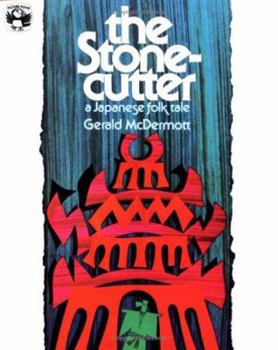The Stonecutter: A Japanese Folk Tale
Select Format
Select Condition 
Book Overview
A lonely stonecutter, tempted by a nobleman's wealth, longs foolishly for power. This description may be from another edition of this product.
Format:Paperback
Language:English
ISBN:0140502890
ISBN13:9780140502893
Release Date:May 1978
Publisher:Puffin Books
Length:32 Pages
Weight:1.58 lbs.
Dimensions:0.1" x 6.5" x 8.8"
Age Range:3 years and under
Grade Range:Preschool and Kindergarten
Customer Reviews
2 ratings
Big Human Lessons in A Little Book...
Published by Thriftbooks.com User , 16 years ago
Because I teach Humanities classes on various levels, I am always on the lookout for engaging resources that can bring the subjects of myth, legends, and folklore to life. Just browsing, I happened upon this little book, and I must say that it is impressive for the universal messages it conveys about humility, gratitude, envy, temptation, status, power, ambition, and the cycles of these things. Ambition can take one far--to great heights even, but sometimes it can take one way too far, which the main character, Tasaku discovers. One major theme of the text is "Be careful what you wish for because it may come true, and if it does, there is a moment of choice---how to handle the gift that has been given." Another parallel theme is "with great power comes greater responsibility, especially for one's own actions." Running throughout the tale is the very Taoistic notion of "the Virtue of the Small." The smallest creatures can affect great / significant change--a little piece at a time--if they are just aware of themselves and if they embrace who and what they are. (For more reading about the Virtue of the Small, seek out B. Hoff's The Te of Piglet book.) The images of The Stone-Cutter prove to be more symbolic shapes than specific details--all rendered in bold colors that look somewhat like expressive "brush" paintings--though I believe they are actually a form of collage. The illustrations truly compliment the curious story rather than detract, and they are unusual enough to capture the interests and imaginations of young people--teaching them to "look" into the pictures rather than just "see" them. Looking vs. seeing makes an excellent foundation-building lesson for the study of visual arts, maps, geography, science, sensory details for composition, etc. This book contains many useful "lesson-oriented" concepts for resourceful teachers and parents to develop their own presentations and activities from, for a variety of ages and stages: 1. Folktales & Storytelling 2. Multicultural concepts and appreciation: Japanese 3. Reading & Vocabulary (brief word list: examples of book's vocabulary / level--chisel, hewed, palaces, preceded, aloft, magnificent, procession, envied, transform, fragrant, withered, parched, obscured, obeyed, trembled); sensory signaling words 4. universal themes 5. Visual Design & Critical Thinking 6. Personal Choices, Temptation, Ambition, Self-centered behavior; Corruption of Power 7. Responsibility & Personal Actions 8. Consequences & Remorse 9. Philosophy & The Virtue of the Small 10. For teens and college students: the story can be related to modern views about fame, fortune, notoriety, quests for power, loss of humanity and humility along the climb to success 11. For workforce training and team-building, this story can be used to illustrate attitudes toward work, the negative sides of ambition, the abuse of power, etc. With the right guide and / or teacher to steer the learning, this book can be a hugh slic
Classroom Help
Published by Thriftbooks.com User , 24 years ago
This book has been great to use in my third grade classroom. It has tied in to our Japan unit very well and has been greatly enjoyed by my third graders.






